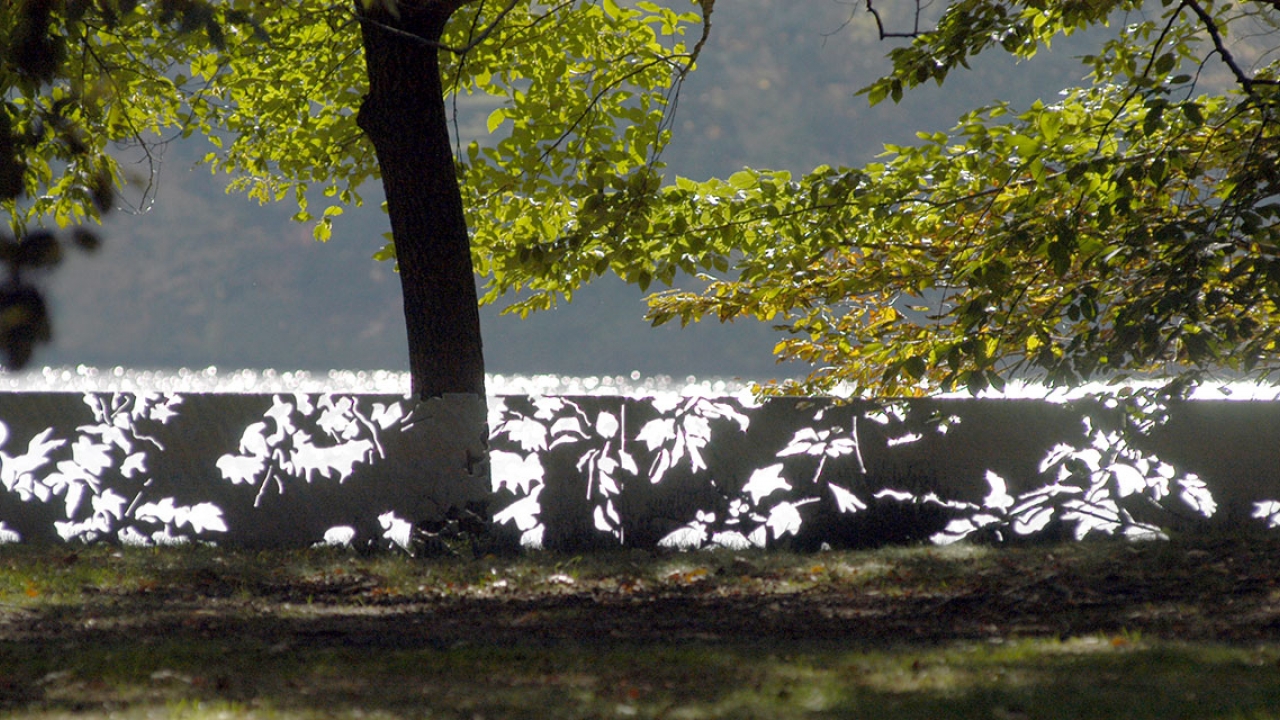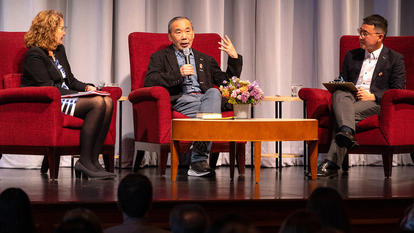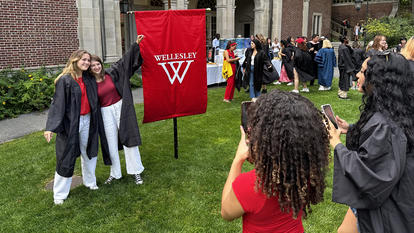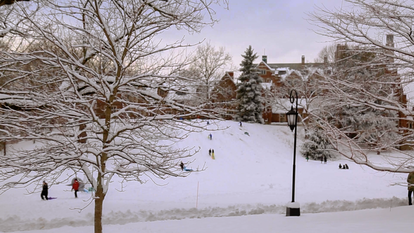Outdoor Sculptures at Wellesley Invite You to Stop and Contemplate

If you’ve strolled across Wellesley College’s campus, you might have been so caught up in the natural surroundings, wildlife, or distinctive architecture that you missed the many examples of expressive outdoor art that appear throughout the landscape.
“Wellesley’s outdoor sculpture collection is worth getting to know,” said Meredith Fluke, the Kemper Curator of Academic Programs at Wellesley’s Davis Museum, who recently led staff and faculty on a walking tour of the College’s eight outdoor sculptures, which the Davis manages.
“The outdoor art provides another way to engage this historic campus,” Fluke said. “These sculptors are among the best-known 20th-century artists. Their work is represented in collections all over the world.”
Generally, these are abstract pieces that complement and don’t overwhelm the overall campus scenery but do inspire a pensive pause.
One cherished work is Clement Meadmore’s Upsurge, a 20-foot-tall sculpture that sits near a stand of birch trees across from Alumnae Hall and next to the Davis parking facility. Its rectilinear and curved form rises above the thousands of students, visitors, and staff traveling through the area. It is like a twisted, muscular monument presiding over the grassy berm where it stands.
Meadmore (1929-2005) was born in Melbourne, Australia. In 1963 he moved to New York City, where he continued his work. Upsurge was a gift to the campus in 2012 from Lynn Dixon Johnston ’64 and Robert F. Johnston.
From there, walk to Clapp Library or around Lake Waban from the Academic Quad and look for Untitled (Filigreed Steel Line for Wellesley College), a thin, straight, steel band 120 feet long planted into the sloping terrain, a subtle yet striking feature in this dreamy oasis.
Ripples from the lake reflect and dance off the band, into which sculptor Robert Irwin cut leaf patterns. This was a gift to Wellesley from Georges and Lois Pattison de Menil ’60, Mildred Cooper Glincher ’61, and Susan Marley Newhouse ’55. It was placed in its serene home in 1980.
Walking to the Science Center from College Road, you will encounter Mozart, but don’t expect a symphony. What you will find is sculptor Kenneth D. Snelson’s Mozart III, installed in 2008, also a gift from the Johnstons. It features an angular arrangement of stainless steel tubes connected by wire cables.
Snelson has described his work as expressing “nature in its primary aspect [and] the patterns of physical forces in three-dimensional space.”
Fluke said of Mozart III, “It’s an amazing sculpture that nimbly connects art and science. It is perfectly located at this intersection, a wonderful representation of the liberal arts.”



